Dear readers, first of all, I’d like to say hello to the new members of this community who have recently opted for a paid subscription. Thank you for the trust! It helps pay the bills and, more importantly, makes me motivated to make Tokyo Calling even better.
I’m also happy to announce that I have recently reached 400 total subscribers. To celebrate this new milestone, I’m keeping the annual subscription to 30 bucks (which, as usual, includes free PDFs, sent on request).
Summer is ghosts and spirits season in Japan - it’s so hot and muggy, that people here tell scary stories to give each other a healthy chill down the spine. But don’t worry, the following story is not so scary…
If it is true that supernatural beings are a form of energy that is strongly connected to violent death and tragic events of the past, then Japan is the perfect breeding place for such phenomena. Tokyo in particular is a city with a long history of catastrophe and death. Blood is everywhere: numerous bloody samurai uprisings, hara-kiri, fire-bombings, modern-day suicide. The capital was racked by earthquakes and terrible fires all through the Edo period, the death toll often reaching into the tens of thousands. Dead bodies were thrown into mass graves without the proper funerary rites performed to allow the souls to move on.
These makeshift graveyards are located everywhere underfoot. From the beginning of the 17th century, the Tokugawa shogunate employed feng shui in city planning to make the capital into a kind of spiritual power center. That, along with certain favorable environmental conditions such as dampness and seismic activity, turned the city into a vortex of ghosts and paranormal activity. (cue creepy music)
There are many ways in which even non-experts can “enjoy” a few mild scares and ghost-induced thrills. Among my favorites are haunted walks around Tokyo. The city’s Ueno and Asakusa districts offer in this sense a great opportunity to explore Japan’s long love affair with spirits.
The area around Tokyo Metro Inaricho Station from where our walk starts is full of temples, shrines, and other related businesses such as stores selling butsudan, those small Buddhist altars that people keep at home to pray for their ancestors – and into which sometimes an evil spirit pulls an unsuspecting person – at least in some J-Horror flicks such as The Grudge.
This is a very risky, notorious spiritual area, and the locals believe that it is cursed: the suicide rate is alarmingly high; when someone tries to start a business, it goes bankrupt; and every time they build something they dig up some human bones. Actually, the district east of Ueno is a huge unconsecrated mass grave into which thousands of victims of the many fires of the Edo period used to be dumped without receiving proper funeral rites.
Spooky tales aside, this area is also worth visiting for its relatively high percentage of very old buildings. Many of them are covered with plates of corrugated iron, probably to protect them from the fire. There are also a few prewar houses lining up along a Moto Asakusa backstreet.
The mistresses of important people of the past used to live here. This particular place is very worth a visit, especially if you are into historical architecture. Until just a few years ago five of such buildings were still standing side by side – a very unusual thing, considering all the past destruction. Unfortunately only two are left now, so if you want to check them out you will better hurry.
Next, we come to Sogenji, better known as Kappa-dera or Kappa Temple because it houses many memorabilia devoted to these child-sized, monkey- or turtle-faced goblins with heads topped by a plate-like disc, that live in the waterways.
At the entrance we are greeted by a wooden sculpture of one of these tricky creatures while “in transition.” Like other yokai, in fact, kappa have the ability to morph into different shapes including human beings. At this very temple one has also the chance to admire a real mummified kappa hand.
Walking through the Matsugaya district, every few meters we find statues and other assorted images of this ubiquitous little fellow. According to legend, kappa from the nearby Sumida River helped the local people stop the constant flooding of the area. Business went on prospering, and even today the Kappabashi district is famous for selling kitchenware and catering supplies including the faux foods you see displayed in restaurant windows.
More weird and scary stories await us once we reach Asakusa. The Buddhist temple called Chingodo, for example, is devoted to another yokai – the Tanuki, or racoon dog. Notorious tricksters of Japanese folklore, Tanuki are renowned for their huge testicles, which can be stretched at will and used as both tools and weapons.
Not far from the temple, we are attracted by the screams of terrified people. It comes from Hanayashiki, the oldest amusement park in Japan – and arguably one of the least safe. Few people know that originally this place was a botanical garden and then was turned into a freak show. Its obakeyashiki (haunted house) was actually haunted by a real ghost that, after the attraction was demolished, is said to be endlessly wandering the park.
The last stop on the tour is Old Hag’s Pond just east of Sensoji. This is the site of an inn run by an evil old woman who murdered countless guests by dropping a stone boulder on them as they slept. The legend became one of Japan’s first horror films. If you are brave enough to visit the place at night, you might hear cries over the still surviving stagnant waters…
Do you believe in ghosts? Any scary stories to share?






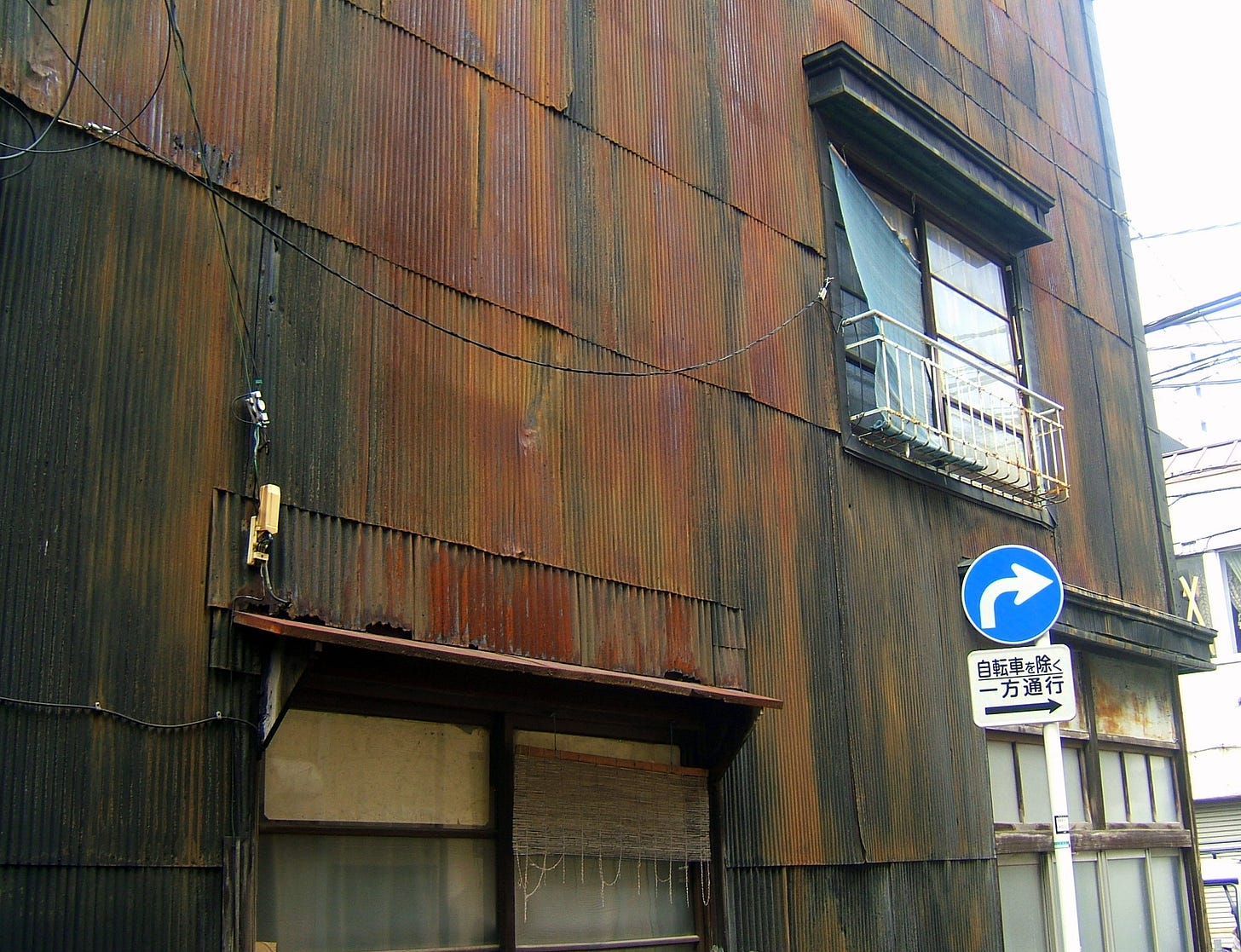
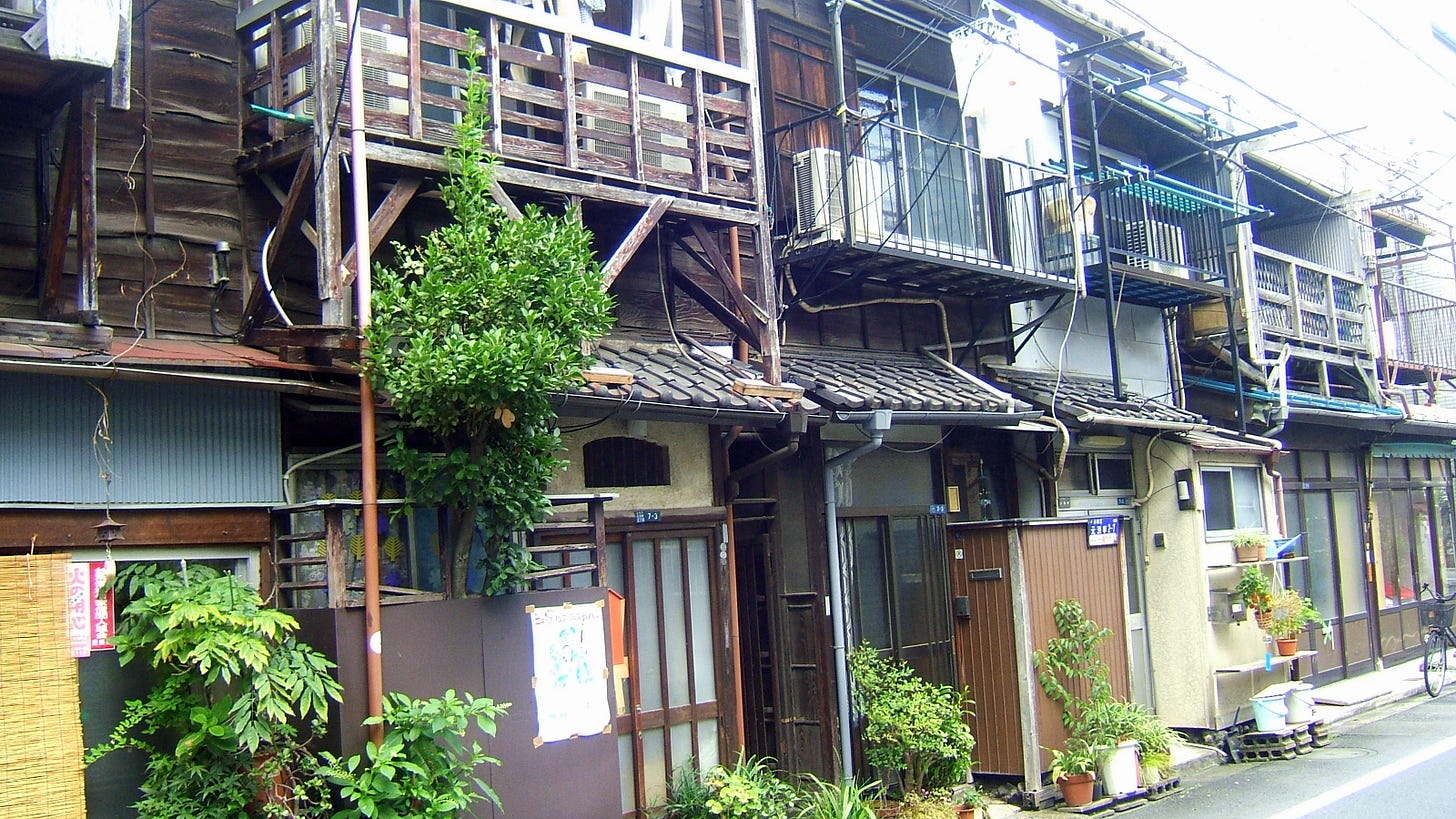

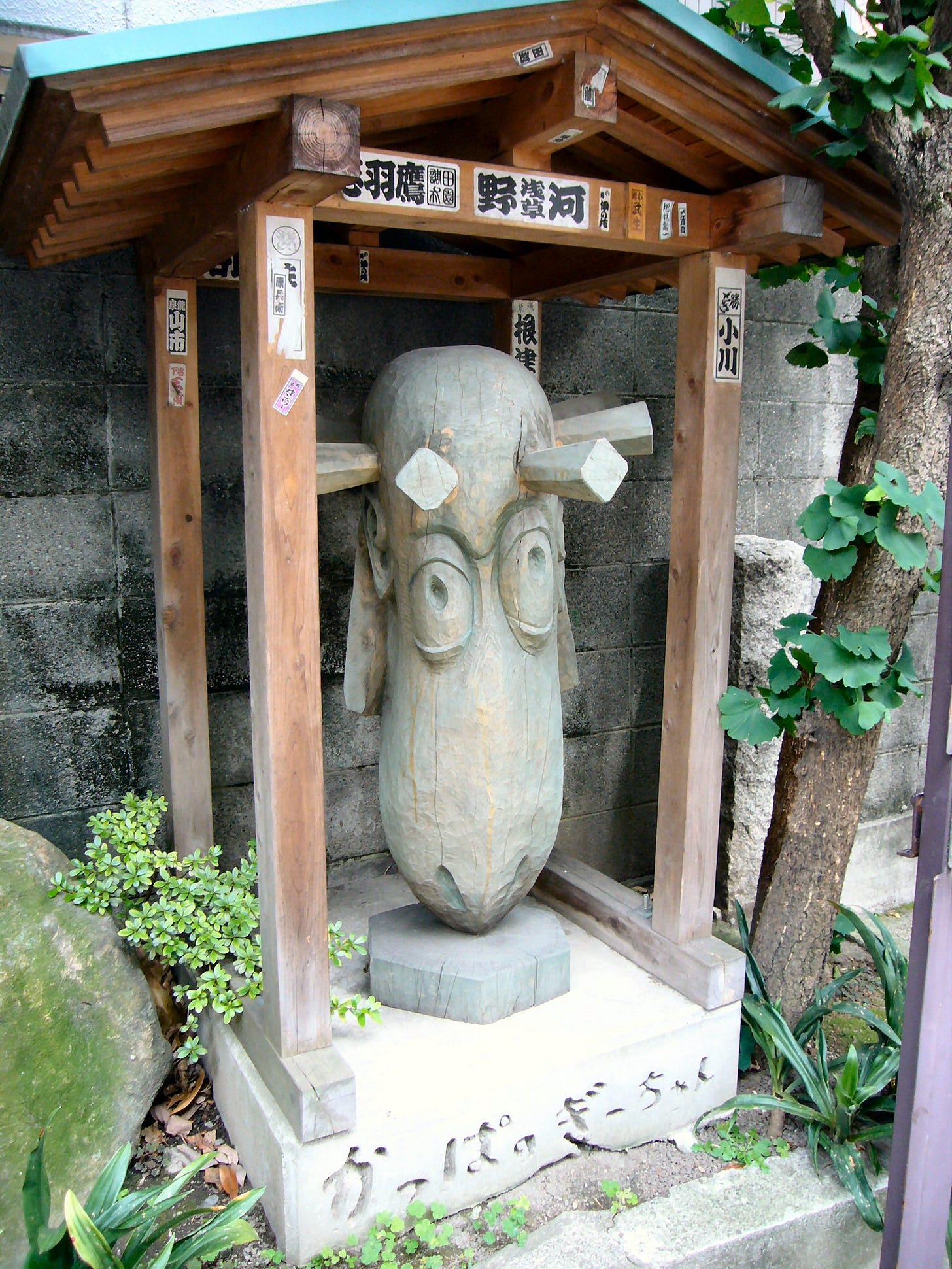


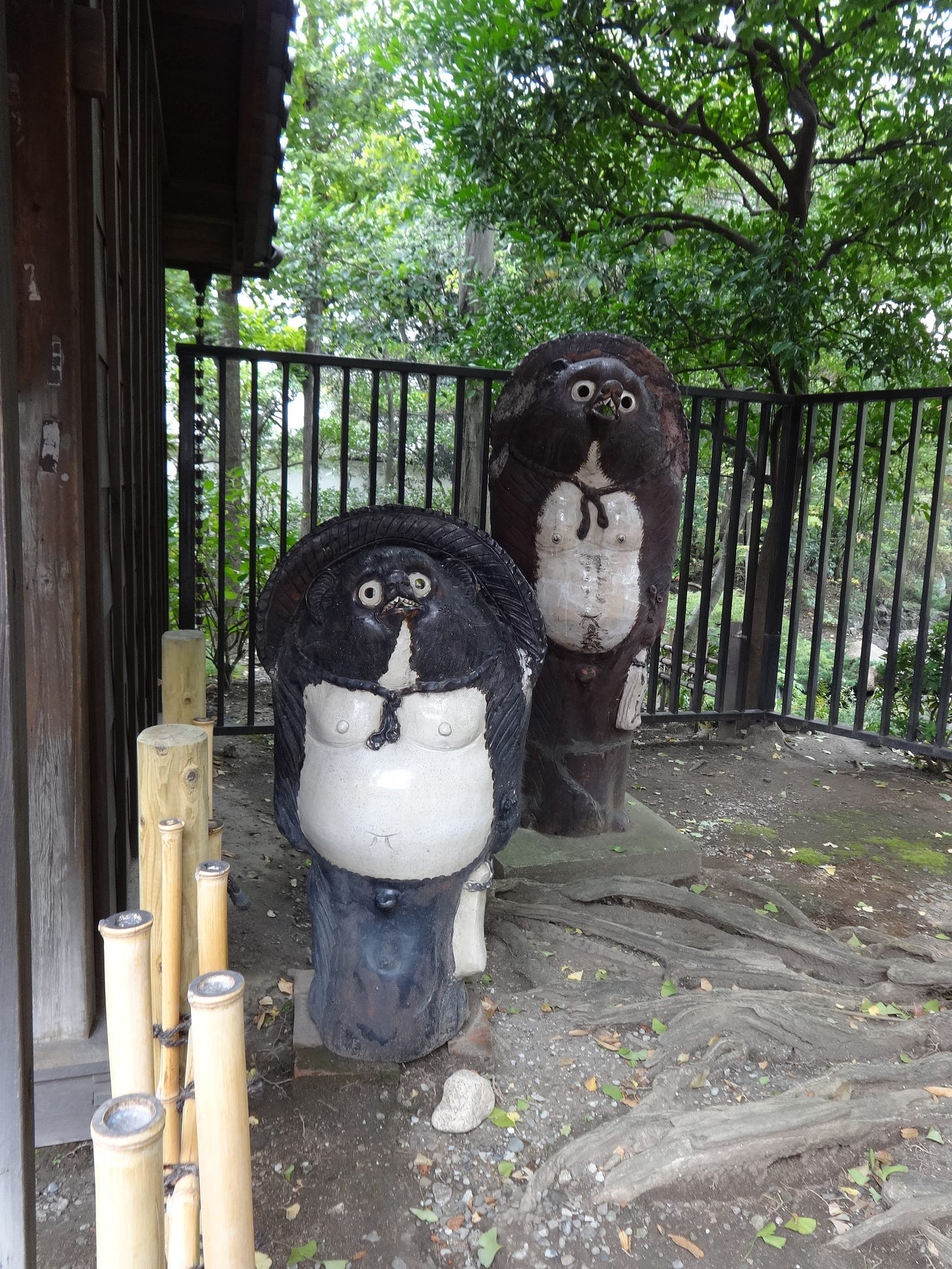

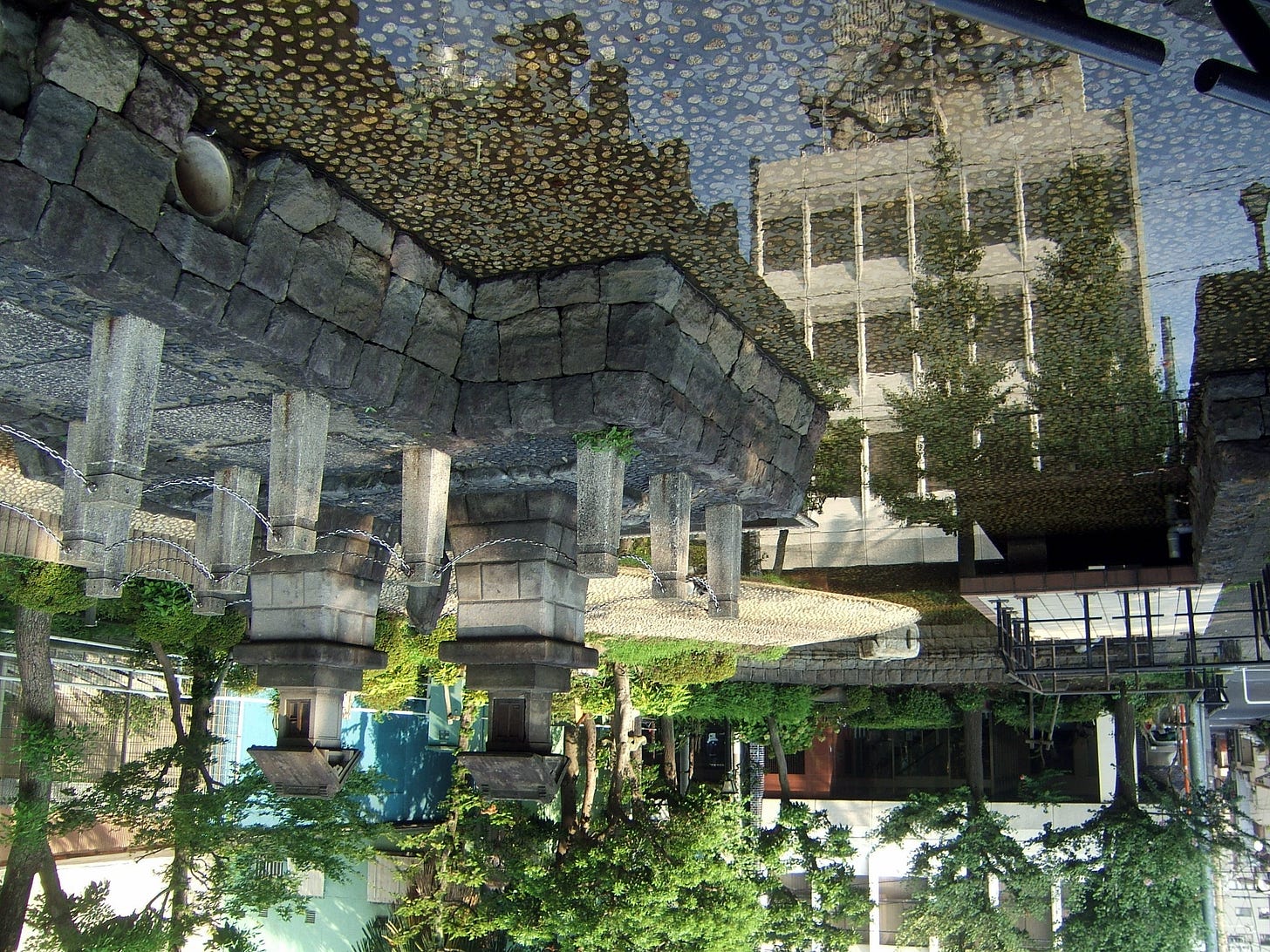
Tanuki are my favorite of this genre. We have several around the house that I brought back from my stay in Japan. The largest greets our visitors at the front door.
This was such a treat to start my day with!